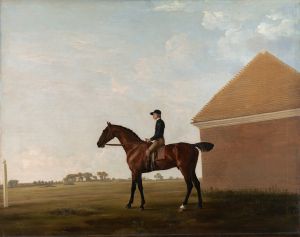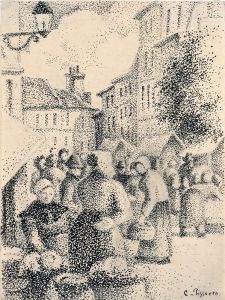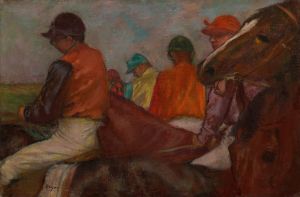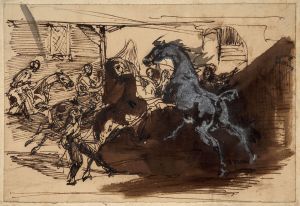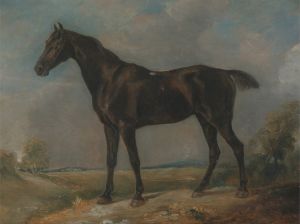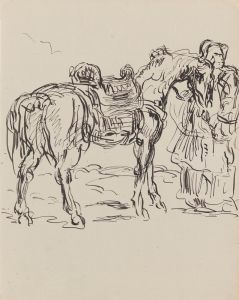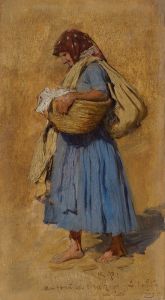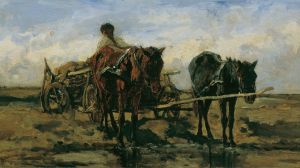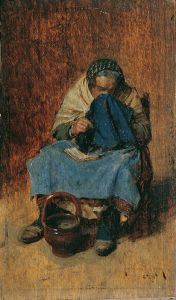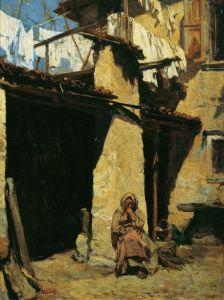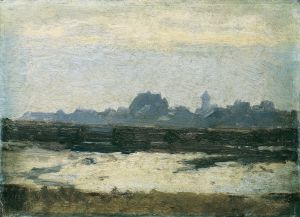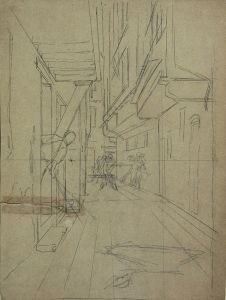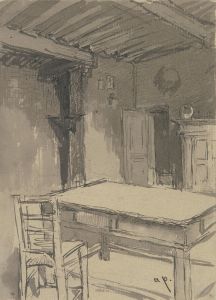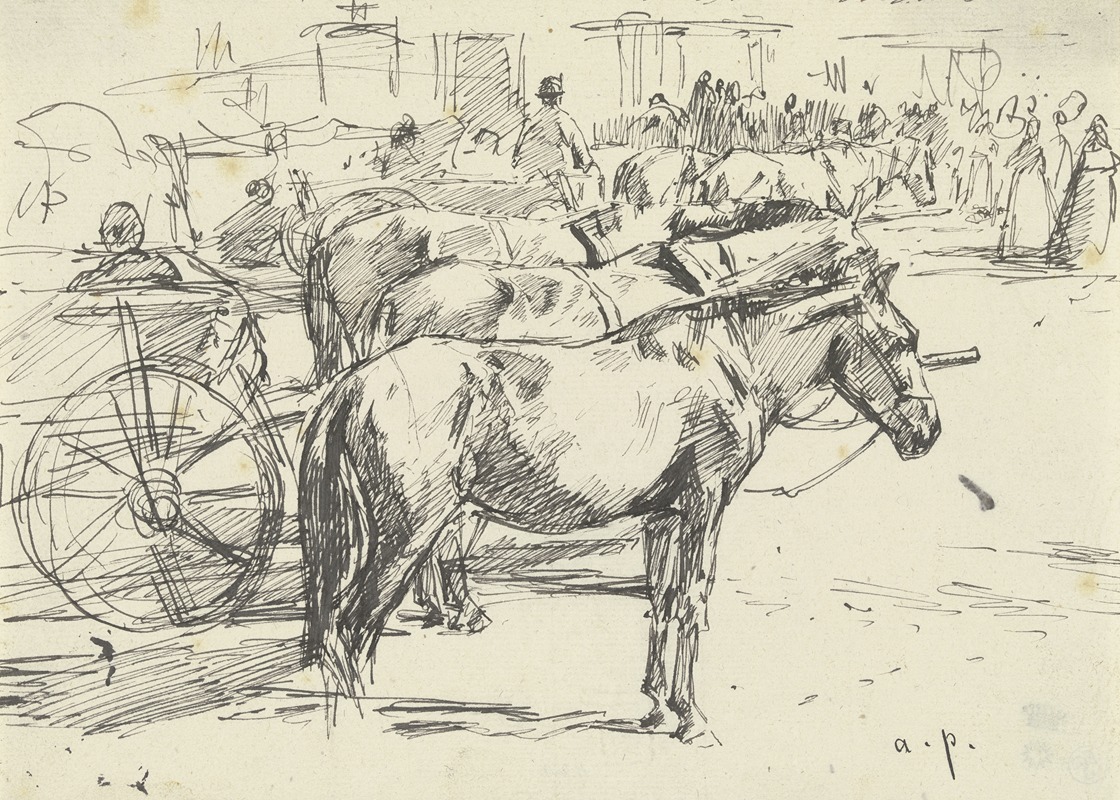
Karrengäule auf einem Marktplatz im ungarischen Szolnok
A hand-painted replica of August von Pettenkofen’s masterpiece Karrengäule auf einem Marktplatz im ungarischen Szolnok, meticulously crafted by professional artists to capture the true essence of the original. Each piece is created with museum-quality canvas and rare mineral pigments, carefully painted by experienced artists with delicate brushstrokes and rich, layered colors to perfectly recreate the texture of the original artwork. Unlike machine-printed reproductions, this hand-painted version brings the painting to life, infused with the artist’s emotions and skill in every stroke. Whether for personal collection or home decoration, it instantly elevates the artistic atmosphere of any space.
August von Pettenkofen was an Austrian painter known for his genre scenes and depictions of everyday life. One of his notable works is "Karrengäule auf einem Marktplatz im ungarischen Szolnok," which translates to "Cart Horses on a Marketplace in Szolnok, Hungary." This painting is a reflection of Pettenkofen's interest in Hungarian culture and his frequent visits to the region, particularly the town of Szolnok, which became a significant source of inspiration for his art.
Pettenkofen was born in Vienna in 1822 and initially trained at the Academy of Fine Arts in Vienna. His early works were influenced by the Biedermeier style, which emphasized realism and detailed depiction of everyday life. However, his artistic direction took a significant turn after his first visit to Hungary in the 1850s. The vibrant life and unique cultural atmosphere of Szolnok captivated him, and he began to focus more on capturing the essence of Hungarian rural life.
"Karrengäule auf einem Marktplatz im ungarischen Szolnok" is a prime example of Pettenkofen's ability to depict the mundane yet lively scenes of daily life. The painting portrays a bustling marketplace with cart horses, which were an essential part of transportation and trade during that era. Pettenkofen's attention to detail is evident in the way he captures the movement and energy of the scene, as well as the interactions between people and animals.
The composition of the painting reflects Pettenkofen's skill in balancing elements to create a harmonious scene. The use of light and shadow adds depth and dimension, bringing the marketplace to life. His palette often included earthy tones, which helped convey the rustic charm of the Hungarian countryside. This choice of color and composition not only highlights the physical aspects of the scene but also evokes a sense of place and time, immersing the viewer in the atmosphere of a 19th-century Hungarian market.
Pettenkofen's works, including this painting, are significant for their ethnographic value. They provide a visual record of Hungarian life during a period of change and development. His paintings are appreciated not only for their artistic merit but also for their historical significance, offering insights into the customs, attire, and daily activities of the people he depicted.
Throughout his career, Pettenkofen maintained a strong connection to Szolnok, and his works contributed to the town's reputation as an artists' colony. His influence extended to other artists who visited the region, and Szolnok became a hub for painters seeking to capture the essence of Hungarian life.
In summary, "Karrengäule auf einem Marktplatz im ungarischen Szolnok" by August von Pettenkofen is a testament to the artist's dedication to portraying the everyday life of Hungary with authenticity and detail. The painting stands as a valuable piece of cultural history, reflecting both the artistic trends of the time and the unique character of Hungarian society in the 19th century.





